Are conventional sculpting techniques and materials a thing of the past? Many sculptors and artists will still prefer the traditional ways, but quite a few have begun creating sculptures using 3D printing.
3D printing has definitely made progress in various fields, fueling creativity in prosthetics, architecture, and more. Artists are no exception, and they’ve started using 3D printing to bring their artwork to life.
Looking at the differences between traditional methods and 3D printing, what stands out the most is that 3D sculptures can have extremely intricate designs, which may be challenging to achieve with conventional methods. 3D printed sculptures use a variety of technologies and processes, and the inspiration behind them also differs.
Through their sculpture projects, artists and the 3D printing firms and organizations that collaborate with them may have the opportunity to push the envelope of 3D printing, bringing unexpected innovation and advances.
Let’s take a look at some of the most remarkable sculptures that creativity and 3D printing have created so far!
The Embrace
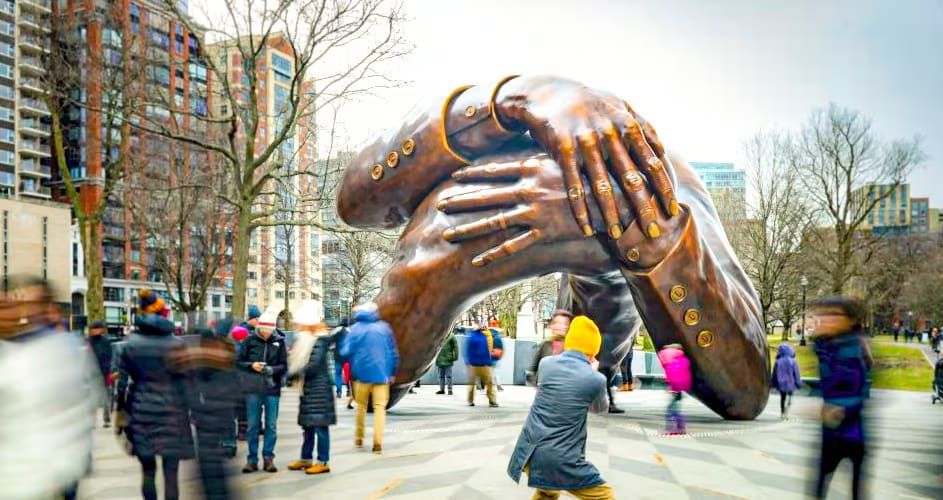
The Embrace was created in honor of Martin Luther King Jr. It depicts him and his wife, Coretta Scott King, sharing an embrace after Martin Luther King Jr. had won the Nobel Peace Prize. The design by Hank Willis Thomas in collaboration with Mass Design Group was chosen from many different proposals. He and his team utilized two VX1000 3D printers to create that would later become The Embrace.
Though the statue itself is not 3D printed, the process for manufacturing it heavily involves 3D printing. VX1000 3D printers were used to construct the components for the sculpture: 600 individual pieces that were 3D printed using polymethyl methacrylate (PMMA) and later covered in a ceramic material. Once constructed and cured, the team heated up the pieces until all of the PMMA melted out, leaving a void into which the molten bronze was poured.
The result is a 6-meter-tall statue that now stands in Boston to remind all of what Martin Luther King Jr. was able to accomplish.
- What materials are used? PMMA, ceramic material, bronze
- What process is used? Binder jetting, investment casting
- Who designed it? Hank Willis Thomas and Mass Design Group
Collective 4
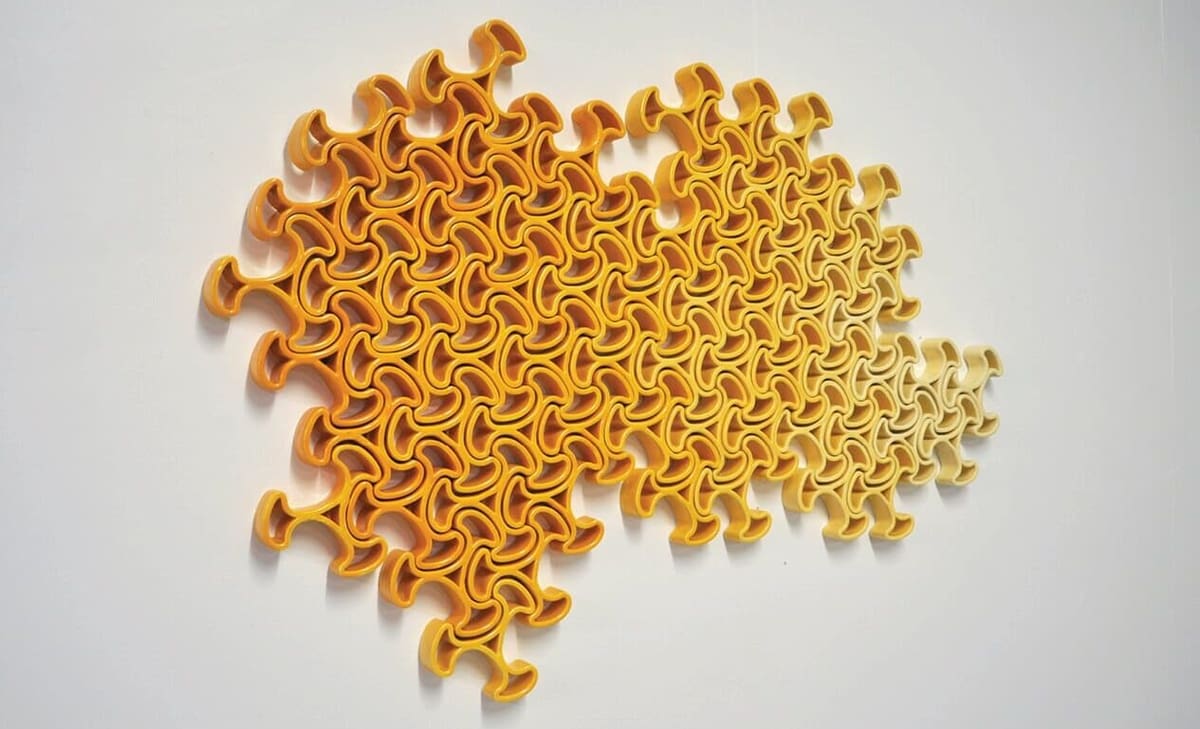
Collective 4 is the brainchild of Brian Peters’ love for artisan clay work and 3D printing. He has spent countless hours tinkering with his very own custom clay 3D printing machine in order to get the results you see today. While he relies on his printer to create the base for his art, you can still see the level of hand-crafted detail he adds to each piece afterward.
Brian takes his inspiration from the natural patterns that emerge within nature, specifically from flowers. Collective 4 was created using a series of smaller ceramic pieces that add up to create a very mesmerizing piece of art. The piece showcases the tolerances required in his work to have every piece fit snuggly into place.
- What materials are used? Clay
- What process is used? Clay 3D printing
- Who designed it? Brian Peters
Digital Grotesque
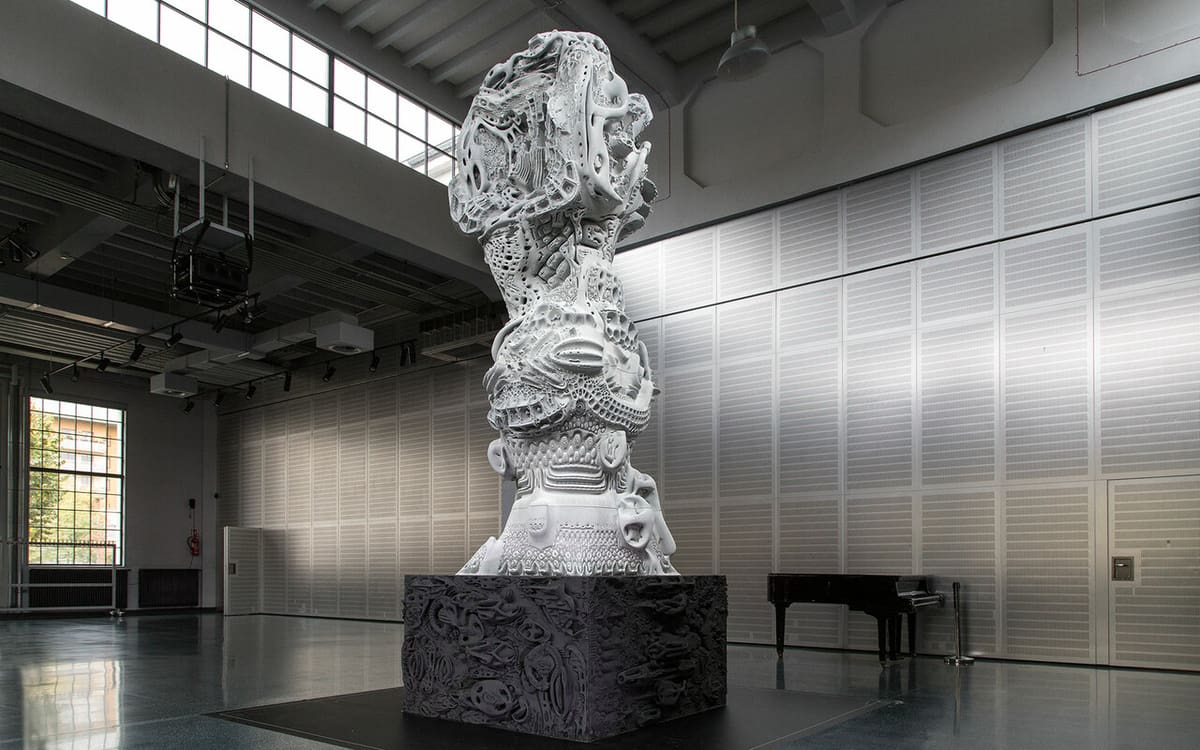
This sculpture, which was on display at the BMW Art Club, is one of the most complex 3D printed sculptures, entirely 3D printed using sand and resin. The design was generated with the combined efforts of the designer and a computer using machine learning and artificial intelligence.
You might be intrigued, baffled, and even awestruck when you first look at it. The motivation behind this artwork is to evoke the viewers’ emotions and broaden their vision of what future architecture might look like. At first glance, this installation might look simply like a chaotic figure, but it holds a different kind of beauty!
- What materials are used? Sand and resin
- What process is used? Binder jetting
- Who designed it? Michael Hansmeyer
The Whale Pass
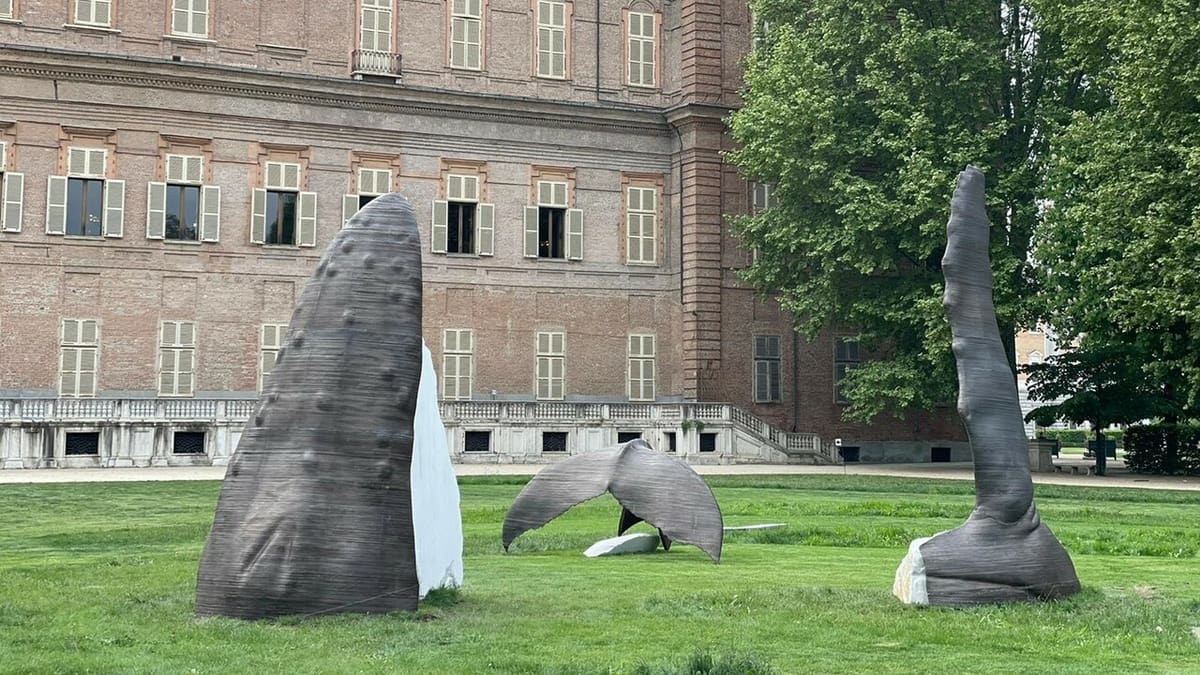
This 3D printed sculpture was part of an exhibition that intended to spread awareness about our planet’s fragility and all life on it.
Humpback whales are majestic creatures. While you can sometimes catch a glimpse of them when you’re on the water, they’re only visible when they surface for air. So, only a portion of their bodies is depicted in these sculptures.
The three pieces that make up the sculpture – the head, fin, and tail – have all been printed using stainless steel and weigh a total of 880 kg. Thanks to the realistic detailing, the sculpture makes the grass around it seem like the ocean!
- What materials are used? Stainless steel
- What process is used? Robotic wire arc additive manufacturing (WAAM)
- Who designed it? Studio C&C, MX3D
World's Tallest 3D Printed Sculpture
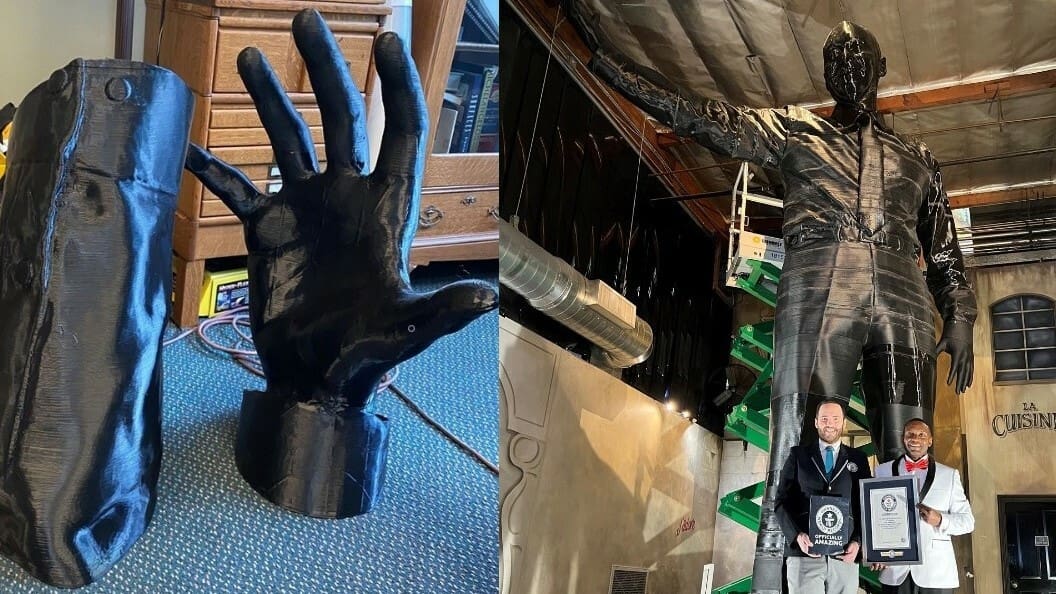
In 2017, James Burton earned the Guinness World Record for the world’s tallest 3D printed sculpture with his 12-foot tall and 110-pound statue.
Following that, Dr. Vinson Allen’s 19-foot 10-inch tall sculpture, which is made of 45 individual parts and roughly weighs 1,500 pounds, broke the record.
Although the statue initially failed to meet the requirements for breaking the record, the maker gave it a second attempt and successfully achieved the goal. In some ways, the sculpture is the doctor’s way of showing gratitude toward his own community. While originally designed to be an advertisement, it has since become (and been named) The Statue of Inspiration.
- What materials are used? Not specified
- What process is used? Fused deposition modeling (FDM)
- Who designed it? Dr. Vinson Allen
Te Ahi Tupua
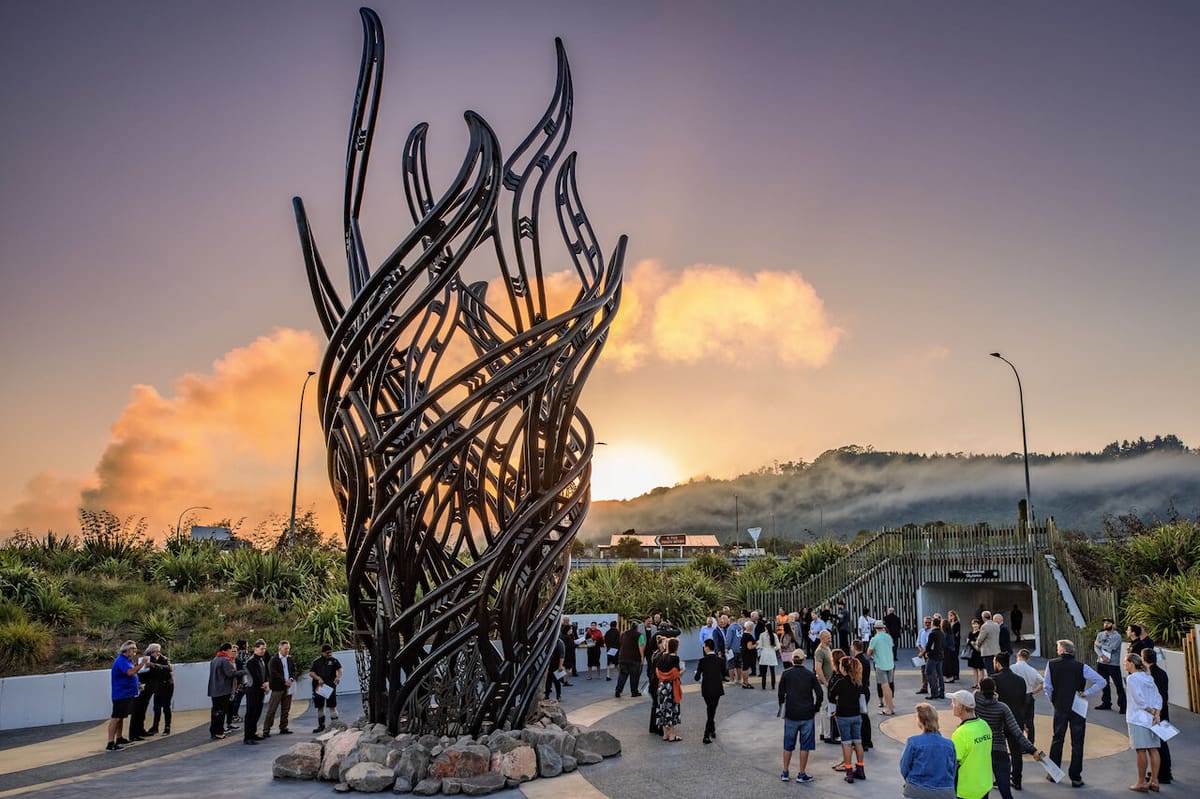
Te Ahi Tupua stands as a testament to the innovation in design and manufacturing that 3D printing has provided to the world. Stacey Gordine has carefully planned out this sculpture, taking into account the elements that it would be exposed to in such an environment while standing very close to passersby. Such a statue would have to overcome very, very strict requirements for safety.
While originally planned to be constructed completely out of stainless steel, Stacey and his team ultimately landed on 3D printing as their solution to the unique shapes and construction restraints, with the help of Kilwell Fibrelab. They cut up the statue into sections, and each were 3D printed and wrapped in a carbon fiber sock before being connected. This led to a very solid build quality that exceeded their safety requirements.
Standing 12 meters tall, Te Ahi Tupua is considered one of the largest 3D printed statues in the world. With 10 3D printers running 24/7, it took the team about six months to get all of the parts they needed. It wouldn’t be until almost two years later that the statue was finally completed and installed on September 12th, 2020.
- What materials are used? PLA, carbon fiber casing
- What process is used? FDM
- Who designed it? Stacey Gordine
Wasp Bull
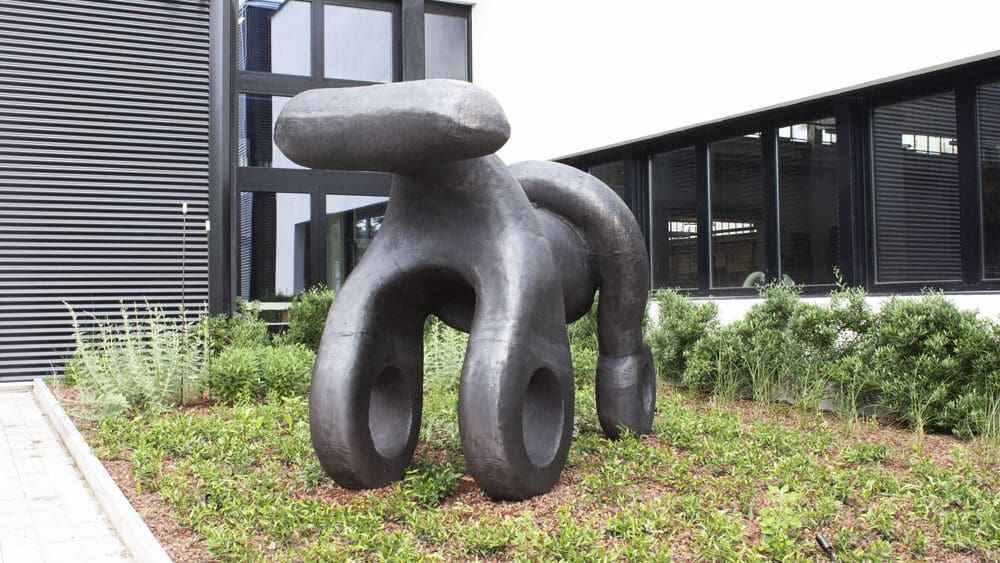
While you may be familiar with Wasp for their industrial-grade 3D printers, you may be surprised to see that they have created quite a few different statues with their state-of-the-art 3D printers. This statue was designed to showcase just how efficient their equipment can be at streamlining the design and manufacturing process of statues this size.
The team began with a small clay model of an abstract bull. They then used an Artec Eva 3D Scanner to build an accurate 3D model of the clay statue that they could later upscale to whatever size they wished. The model was brought into Meshmixer and separated into several pieces that would each later be 3D printed on their industrial 3MT HDP 3D printer. They chose to print entirely in acrylonitrile butadiene styrene (ABS), as this would provide the easiest solution for assembly and weatherproofing.
The final product is a 4-meter-tall statue that you couldn’t tell was 3D printed at first glance. This piece shows that you don’t have to be a skilled 3D modeler in order to create amazing works with 3D printing.
- What materials are used? ABS pellets
- What process is used? FDM
- Who designed it? Wasp
H.O.R.T.U.S. XL
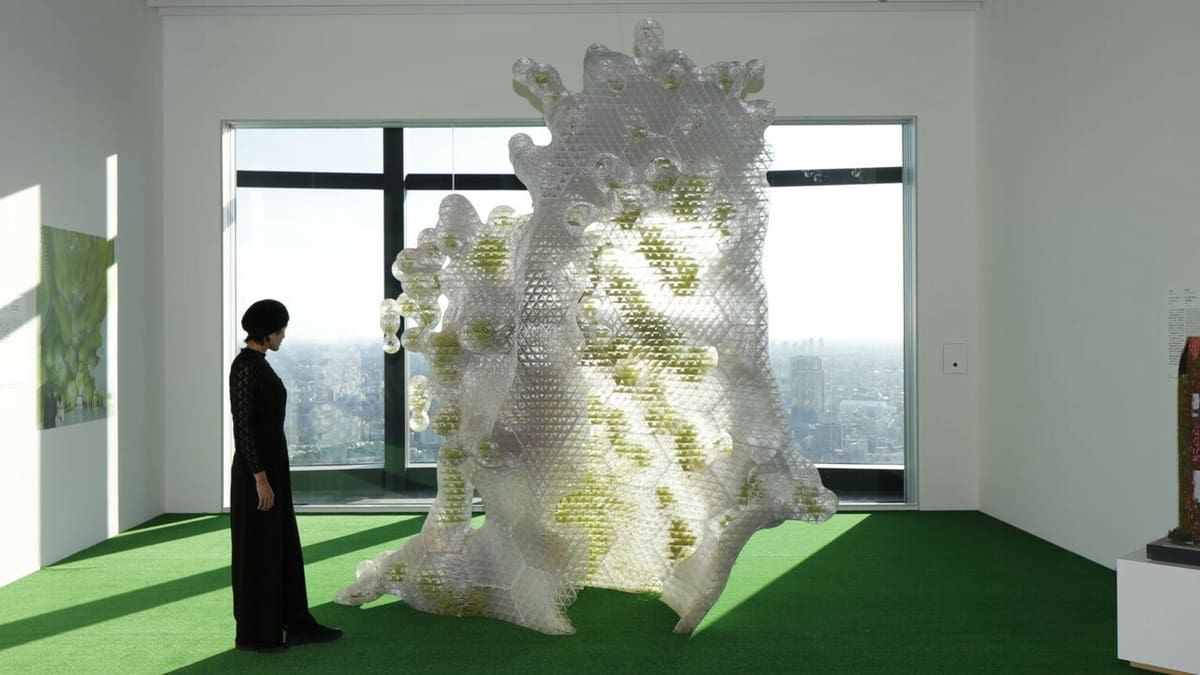
What do you get when a design studio collaborates with a research institute? A tremendous installation that provides insights into the microbiological world!
The sculpture H.O.R.T.U.S. XL Astaxanthin.g simulates the growth of substratum inspired by coral morphology. It’s the result of collaboration between ecoLogicStudio and the research institutes Synthetic Landscape Lab at the University of Innsbruck and Create Group from the University of Southern Denmark.
The artwork is the world’s first 3D printed bio-reactor. Its experimental structures were algorithmically designed, then sectioned into 185 different construction units. The parts, weighing 597 pounds in total, were entirely printed on Wasp 3D printers. The process took about 1,780 hours!
- What materials are used? PETG
- What process is used? FDM
- Who designed it? ecoLogicStudio
Silhouettes
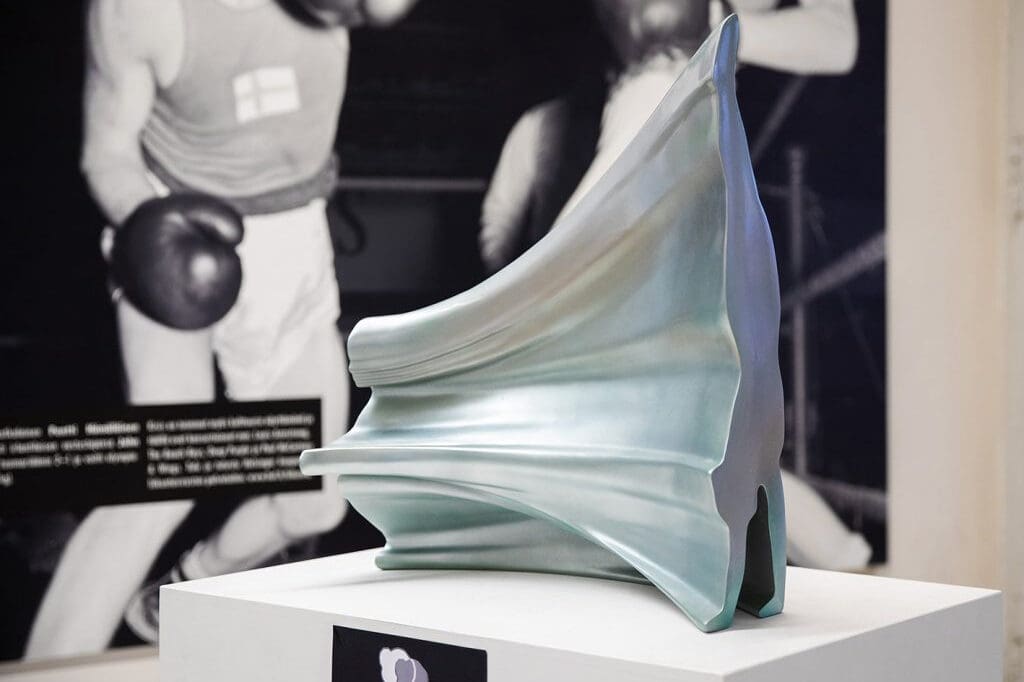
Sculptor Satu-Minna Suorajärvi has created many unique statues using 3D printing and laser cutting as well as a variety of materials. She specializes in organic shapes that depict the human condition with flowing, seamless designs. Aluminum and spray paint were used in her earlier works to get that gorgeous and smooth finish. Her recent works showcase how 3D printing can be used to get the same surface finish and create even more intricate shapes and designs that would be difficult with other mediums.
She has a collection of human silhouettes that are each created using your standard 3D printing methods and spray paint. While small in size, each of these pieces tells a unique story. In a collaboration with Kunstventures, Art Cache Helsinki, and Arilyn, Satu-Minna was able to combine her statues with augmented reality to give a new dimension to her work.
- What materials are used? PLA
- What process is used? FDM
- Who designed it? Satu-Minna Suorajärvi
Token Homes
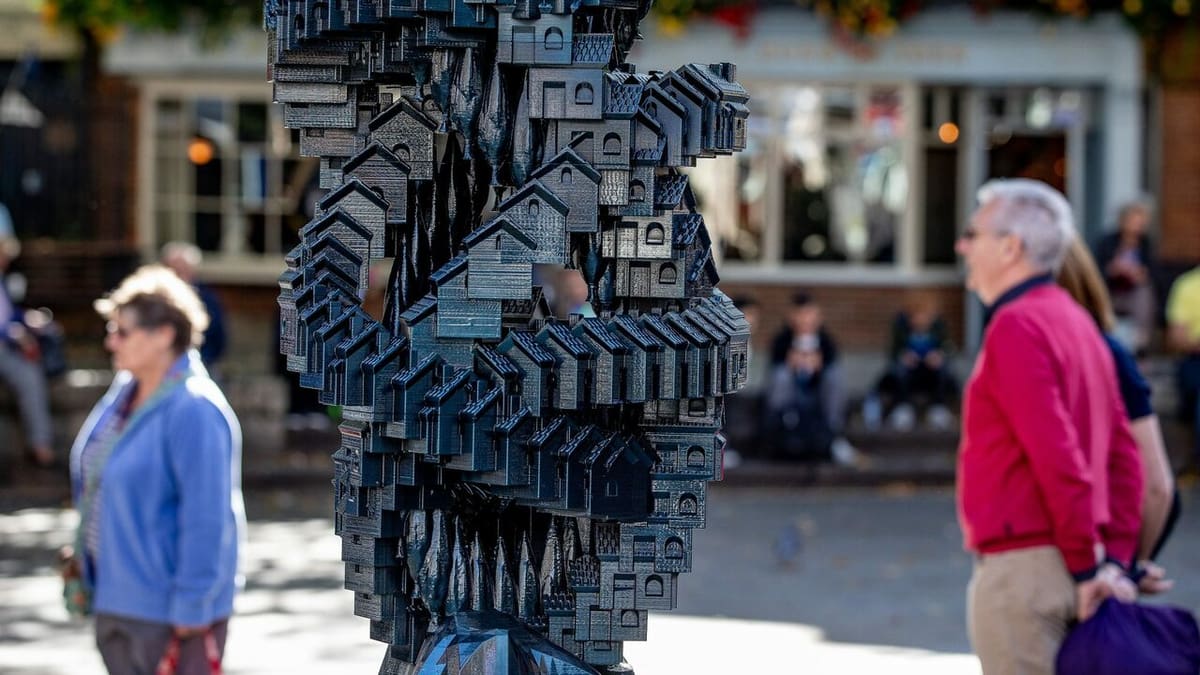
This artwork by British artist Matthew Plummer Fernandez is a critique of the housing crisis in London. He himself struggled to find a place to live in the English capital, and with Token Homes, he criticizes the way that many homes are seen as an investment rather than a place to live.
The 10-foot tall sculpture is composed of 400 miniature homes, which the 3D printing startup Fluxaxis printed on a Fortus 900mc 3D printer using ABSplus. The service provider is a sister company of engineering design firm Stage One, where Plummer Fernandez worked as an artist-in-residence.
- What materials are used? ABSplus
- What process is used? FDM
- Who designed it? Matthew Plummer Fernandez
Nesurak
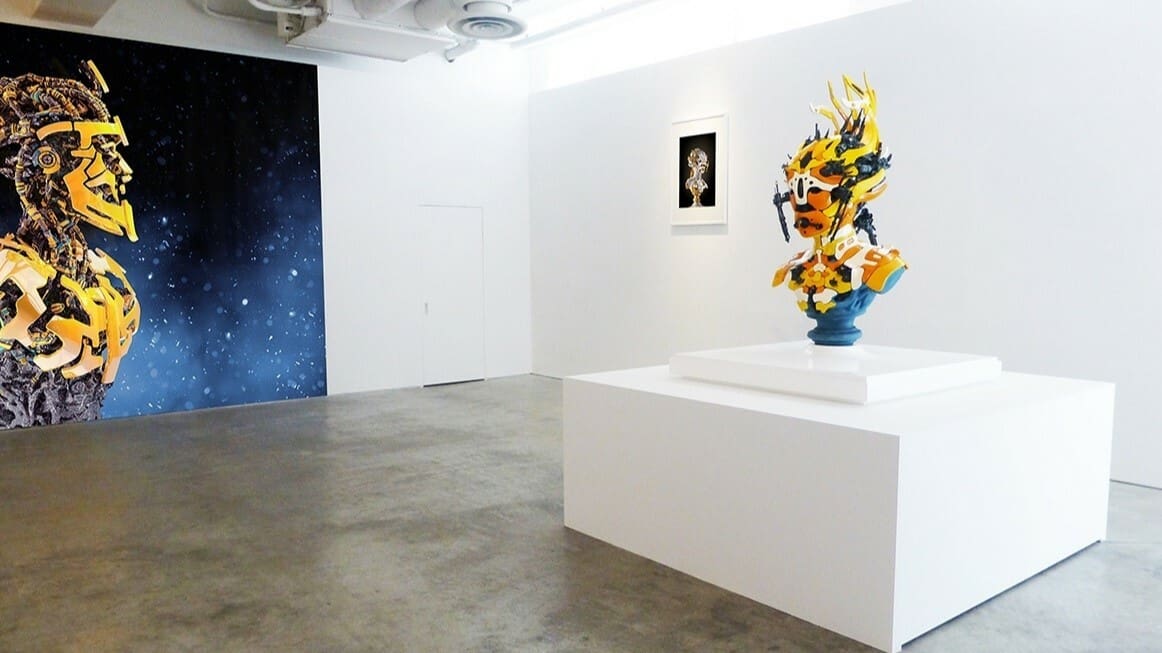
This colorful 3D printed sculpture is the result of cooperation between Belgian artist Nick Ervinck and 3D printing service provider Materialise. Inspired by aliens, robots, and science-fiction creations, Ervinck’s artwork appears as a heroic god statue from the future – like a mask from Maya and Inca cultures with a bit of a Star Trek flair.
The futuristic sculpture measures 40.9 x 19.3 x 21.3 inches and is composed of 200 pieces. Materialise produced the individual parts with selective laser sintering (SLS) machines. They sent those pieces to Nick’s studio, where the artist smoothed and colored the surfaces before putting them together to make his fantastic cyborg sculpture.
- What materials are used? PA 12 (nylon)
- What process is used? SLS
- Who designed it? Nick Ervinck
Poly
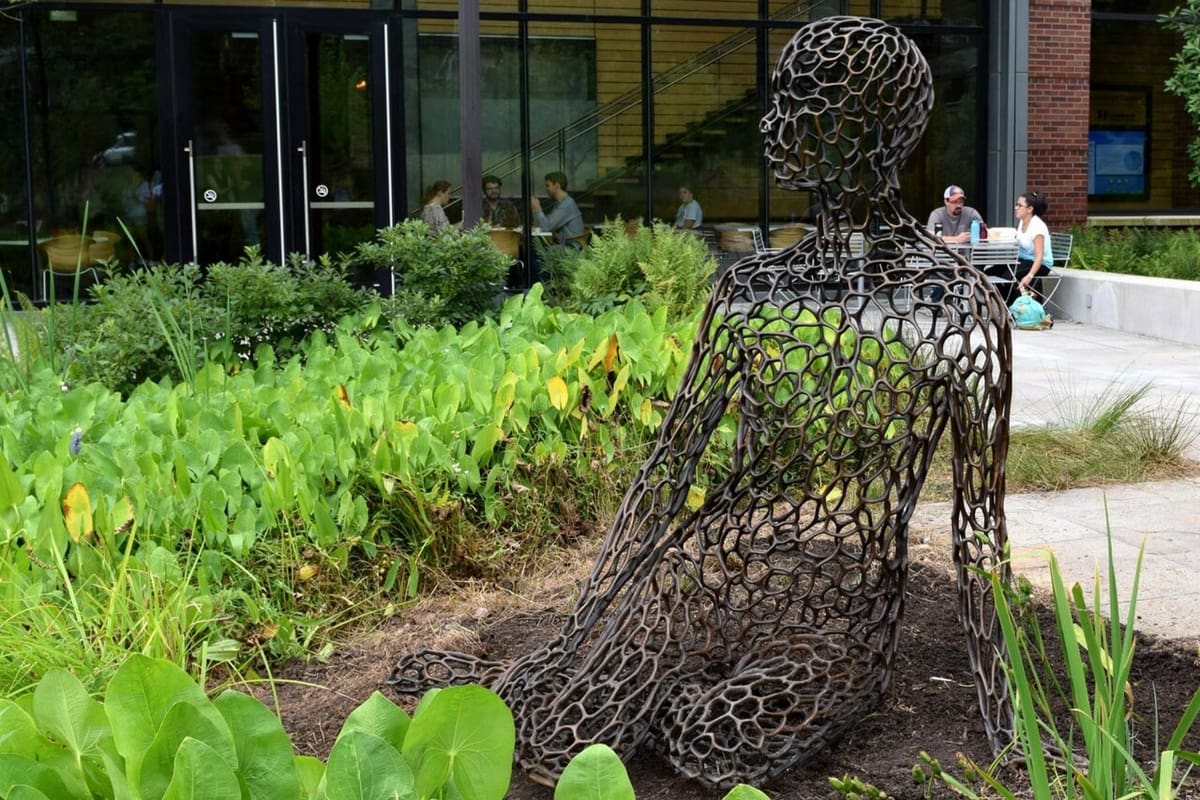
Julian Voss-Andreae is not only an artist but also a physicist and mathematician, and one can clearly see that science is a crucial source of inspiration for his art. It shouldn’t be surprising that he used 3D printing for his bronze sculpture Poly.
Within 10,000 hours, he 3D printed 100 molds with PLA filament using LulzBot printers. These pieces served for casting the female-shaped statue in bronze.
The 3D printed sculpture was revealed in 2017 and can be seen at the Georgia Institute of Technology in Atlanta.
- What materials are used? PLA, bronze
- What process is used? FDM
- Who designed it? Julian Voss-Andreae
Spherical Creations
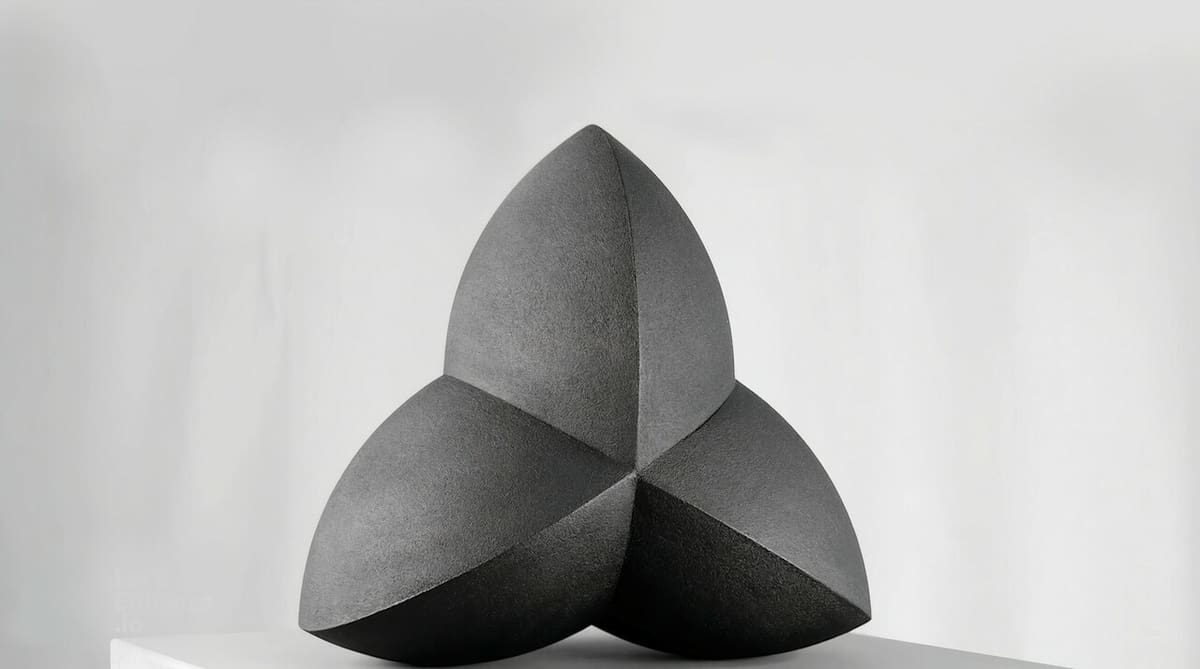
With the goal of creating the most perfect physical form, Dario Santacroce has sculpted a few spherical creations that have minimal yet complex designs.
The starting point of these creations is the Reuleaux triangle, a shape found in architecture, old maps, and even objects like guitar picks and fire hydrants. Using the Reuleaux triangle as the base, the artist has created almost 15 different forms, all equally unique and fascinating.
These designs were first tested using FDM and later realized with sandstone. However, the 3D printed sandstone sculptures are far from perfect and require some post-processing. To overcome this, custom tools were 3D printed to sand down and give the spheres their final shape.
- What materials are used? Sandstone
- What process is used? Binder jetting
- Who designed it? Dario Santacroce
Blooms
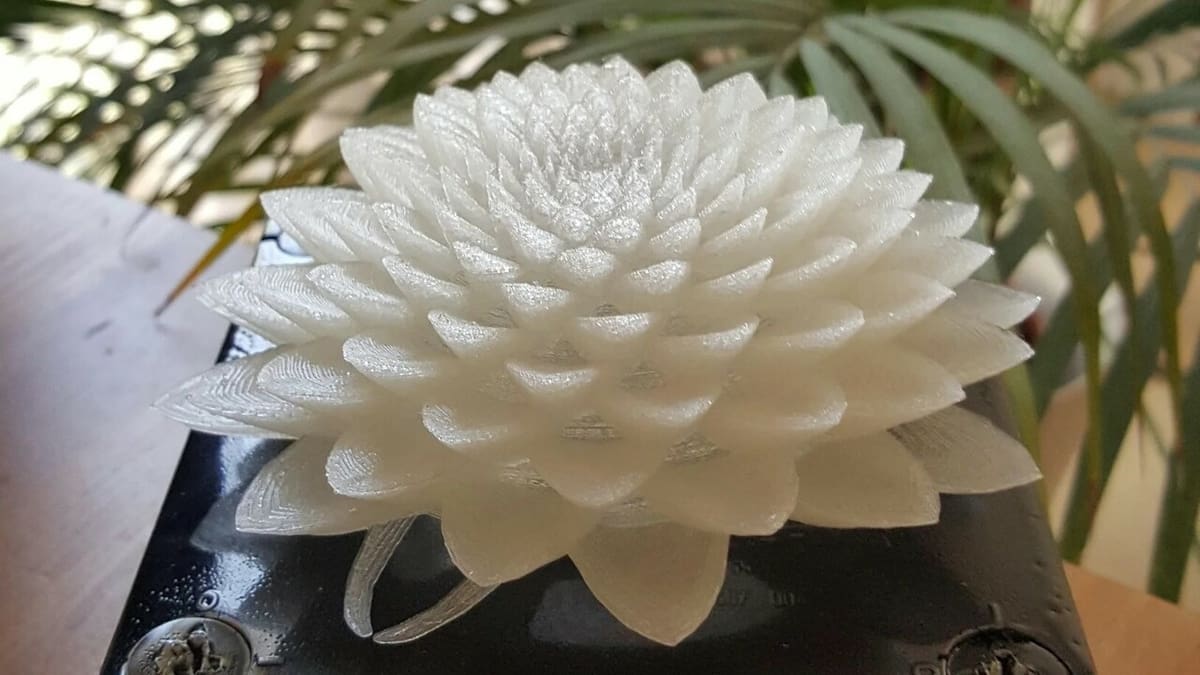
Through his work, John Edmark demonstrates that it’s possible to create something remarkable when merging art and science.
The Stanford University lecturer and designer uses 3D printing to create fascinating masterpieces such as the Blooms sculptures. The flower figurines, inspired by nature and geometry, animate when spun under a strobe light and are extremely hypnotizing to watch.
Thrilled by Edmark’s flower sculptures? You can buy your own Bloom flower or create one.
- What materials are used? Nylon
- What process is used? FDM
- Who designed it? John Edmark
Sunflowers
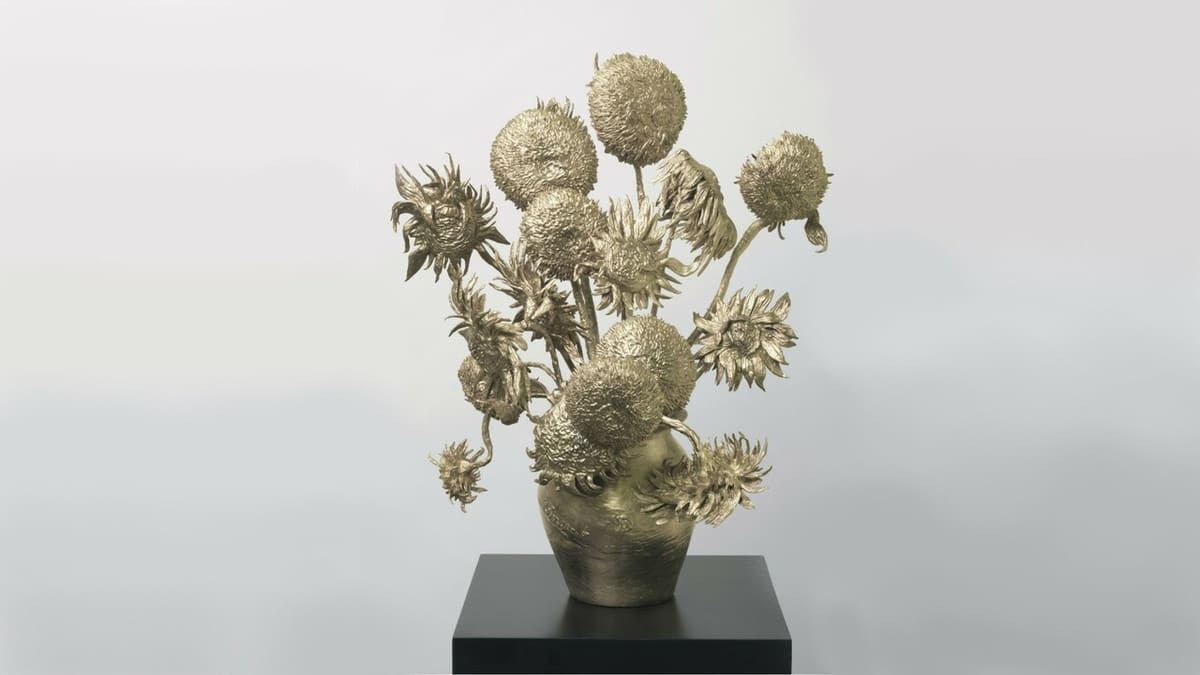
Rob and Nick Carter are well-known artists, with pieces collected by Elton John, the Beckhams, and other notable people. They aim to reinterpret traditional art pieces using innovative technologies and have successfully done so for a few, creating some fabulous sculptures.
One such example is their reinterpretation of Vincent Van Gogh’s famous Sunflowers oil painting from 1888, which they produced using 3D printing. For the production of the 23-inch-high replica, the Carters collaborated with creative visual effects studio MPC, transferring van Gogh’s painted image into a digital 3D model.
The 3D file was printed with Visijet M3-X resin using a high-end ProJet 3500 printer, which can print with precision as high as 16 microns. Finally, the sculpture was cast in silicon bronze.
- What materials are used? Resin
- What process is used? Material jetting
- Who designed it? Rob and Nick Carter
License: The text of "3D Printed Sculpture: 15 Most Impressive Projects" by All3DP is licensed under a Creative Commons Attribution 4.0 International License.


